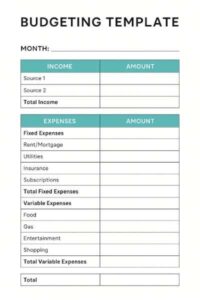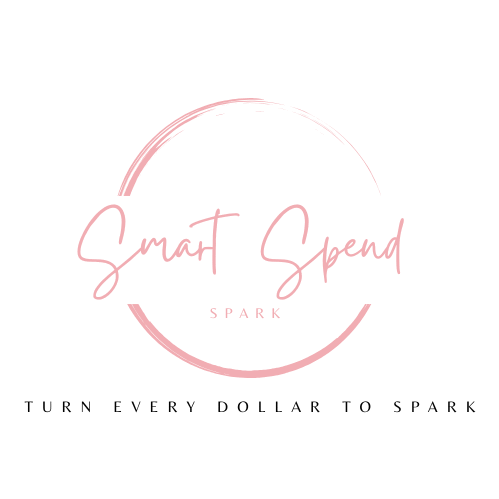Managing money doesn’t have to feel overwhelming. Whether you’re trying to save for a vacation, pay off debt, or simply stop living paycheck to paycheck, budgeting is the key. The good news? You don’t need expensive apps or complicated software to get started. Sometimes, the simplest tools—like free budgeting templates—can be the most effective.
In this post, I’ll walk you through what budgeting templates are, why they matter, where to find free ones, and how to choose the right template for your lifestyle. I’ll also share a few tips to make sure you stick with your budget and actually see results.
What Is a Budgeting Template?
A budgeting template is a pre-designed worksheet (usually in Excel, Google Sheets, or PDF) that helps you organize your income, expenses, and savings goals. Instead of starting from scratch, you can plug your numbers into the template and instantly see how your money is being allocated.
Think of it as a roadmap for your finances—it shows you where your money comes from and where it’s going.
Budgeting templates usually include:
- Income section: Salary, side hustle money, or other earnings.
- Fixed expenses: Rent, utilities, insurance, subscriptions.
- Variable expenses: Food, gas, entertainment, shopping.
- Savings & debt payments: Emergency fund, retirement contributions, credit card payments.
The best part? Many templates do the math for you. That way, you can focus on the decisions instead of crunching numbers.

Why Use a Free Budgeting Template Instead of Paid Tools?
With dozens of budgeting apps out there, you might wonder why you should bother with a free template. Here are a few reasons:
- Cost-Effective: You don’t pay a single penny. Perfect if you’re just getting started with budgeting.
- Customizable: You can edit a template to match your financial goals and lifestyle. Apps, on the other hand, often lock you into their system.
- Simplicity: A spreadsheet or printable template avoids distractions like ads, app notifications, or upgrades.
- Accessibility: You can use a template offline, on your laptop, or even print it to keep in your planner.
- Privacy: No need to link your bank account or share financial data with a third-party app.
Types of Free Budgeting Templates
Different templates suit different needs. Here are some popular types:
1. Monthly Budget Template
Tracks your income and expenses for one month at a time. Great for beginners.
2. Annual Budget Template
Provides a bird’s-eye view of your finances for the entire year. Helpful if you’re planning for big events like weddings, home buying, or vacations.
3. Zero-Based Budget Template
Every dollar you earn has a job—whether it’s spending, saving, or debt repayment. Nothing is left unassigned. This method is powerful for people who want total control over their money.
4. Envelope Budgeting Template
A digital twist on the old-school cash envelope system. You assign categories (like groceries, dining out, or gas) and track how much you’ve spent in each “envelope.”
5. Debt Payoff Tracker
Focuses on tracking payments toward credit cards, student loans, or other debts. It’s motivating to see balances shrink over time.
6. Savings Goal Template
Perfect if you’re saving for something specific—an emergency fund, a car, or a dream trip.

Where to Find Free Budgeting Templates
Here are some trusted places to grab free templates:
- Microsoft Office Templates: Search Excel’s built-in template gallery for “budget.”
- Google Sheets Template Gallery: Accessible with a free Google account.
- Money-Saving Blogs & Websites: Many personal finance bloggers (like Smart Spend Spark!) offer free downloads.
- Pinterest: Type in “free budget templates” and you’ll find endless printable versions.
- Reddit & Community Forums: People often share their own customized spreadsheets for free.
How to Choose the Right Template for You
Not every budgeting template will fit your lifestyle. Here’s how to pick the best one:
- If you’re a beginner: Start with a simple monthly budget.
- If you’re detail-oriented: Try a zero-based budget template.
- If you’re focused on debt: Use a debt snowball or avalanche tracker.
- If you’re saving for goals: Choose a savings-focused template.
- If you’re a visual learner: Look for templates with charts or graphs.
Tips for Sticking to Your Budget
Creating a budget is just the first step—sticking to it is where the real magic happens.
- Update Regularly: Check in at least once a week to track your spending.
- Be Honest: Record every expense, no matter how small. Even daily coffee adds up.
- Stay Flexible: Don’t beat yourself up if you overspend in one category. Adjust and move forward.
- Use Cash for Problem Areas: If you overspend on dining out, withdraw a set amount of cash each month for restaurants.
- Set Realistic Goals: Don’t expect to save $1,000 a month if your income doesn’t allow it. Start small.
- Celebrate Wins: Paid off a credit card? Met your savings goal? Celebrate those milestones to stay motivated.
Sample Budgeting Categories
When setting up your budget template, here are some categories to include:
- Housing: Rent, mortgage, utilities, maintenance.
- Transportation: Car payment, insurance, fuel, public transport.
- Food: Groceries, dining out, snacks.
- Health: Insurance, prescriptions, gym memberships.
- Debt Repayment: Credit cards, student loans, personal loans.
- Savings: Emergency fund, retirement, sinking funds.
- Lifestyle: Entertainment, hobbies, shopping, subscriptions.
According to me :
A budget isn’t about restricting yourself—it’s about giving your money purpose. Free budgeting templates make it easier to get started without the pressure of expensive software. Whether you’re trying to pay off debt, save for the future, or simply stop worrying about money, the right template can give you the structure and clarity you need.
So, why wait? Download a free budgeting template today and take the first step toward financial freedom. Remember: it’s not about perfection, it’s about progress. Every small step you take brings you closer to a secure and stress-free financial future.

